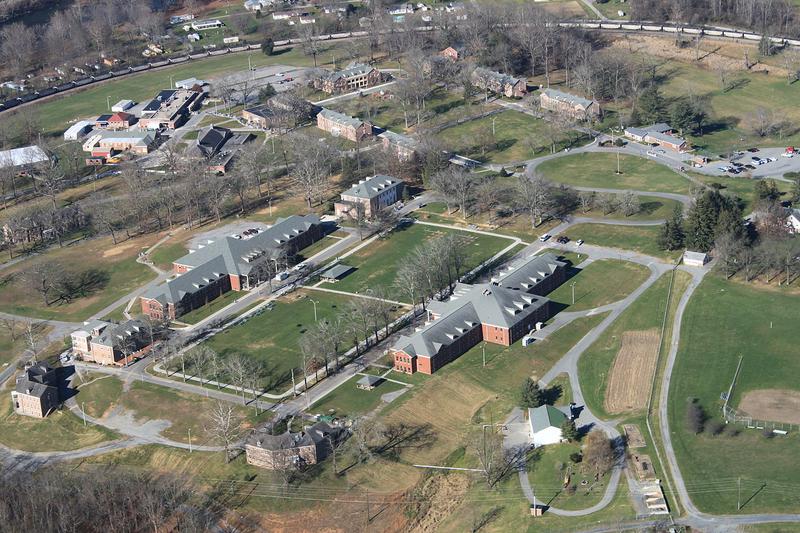The First Federal Prison For Women Was Opened In 1928, West Virginia (And How It Went)
By | May 6, 2021

Nestled in the rolling hills of Alderson, West Virginia, sits the very first federal prison for women in the United States, the Federal Industrial Institute for Women which opened on April 30, 1927. The first federal men’s prison, by contrast, was the Fort Leavenworth prison in Kansas which the Department of Justice formed in 1895. Why the delay? Well, typically, crimes were punished at a local level and there were few federal crimes to begin with, and up until the late 1910’s, women broke (or at least got caught breaking) very few of them.
The rare women who did break federal law were usually housed in sectioned off areas of men’s prisons, were they were not only subject to the inhumane conditions prisoners of the time were made to suffer, like insufficient nutrition, physical abuse, and intense insolation, but women inmates too often also faced sexual assault by the hands of the an all male guard system. However, the turn of the century saw a strengthening of the federal government and it’s laws, and suddenly the female prison population swelled as Prohibition made the manufacturing and sale of alcohol illegal, and the Selective Service Act of 1917 made prostitution a federal crime in an effort to stem the spread of venereal disease among it’s armed forces.

Alongside the moonshine slingers and sex workers were women’s rights groups like the Suffragettes who often found themselves in hot water with the US government. After being arrested for protesting and trespassing on federal grounds in Washington D.C., many Suffragettes were sequestered in the dank and dirty corners of men’s prisons. The Suffragettes were often well educated, well connected, and sometimes wealthy women who had significant community support. Once word got out that they were being subjected to things like water torture and forced to strip in front of an all male staff, the public began to pressure the government to find safer accommodations, especially given that so few of these offenders were violent.
Thus, the Assistant U.S. Attorney General, Mabel Wildebrant, and warden Mary Harris sought to create an institution meant to incarcerate, but more importantly rehabilitate, their growing female prison population. Maybe the most important aspect of the Alderson Prison is it’s architecture, which purposely modelled itself after a local college, with large open windows and red brick. Instead of having one massive building with many little cells, Wildebrant chose to build several “cottages”, which were more like large boarding houses than a prison. Each cottage had its own kitchen and eating area, and women were more or less free to come and go as they wish. The grounds themselves had no walls or fences, and very little ground security as the rural location and steep hills served as a good enough deterrent for would be escapees.

Instead of sitting in their cells in isolation, the women spent their time working as seamstresses or in the farm and dairy, contributing to the upkeep and day to day life of the prison. It was the warden Harris' belief was that if the facility could create a sense of community and security while offering inmates a job, they would be able to develop the social and work skills needed to reenter society. On November 24, 1928, Harris welcomed over a thousand congressmen, governors, and other dignitaries to the opening ceremony, and surprised the guests by having the inmates host tours and serve afternoon tea. Some visitors found the experience so charming that they willingly stayed over night!
The prison was maybe even too comfortable, as a few prisoners, like Puerto Rican nationalist Lolita Lebron and Nazi propogandist Mildred Gillard (aka Axis Sally), actually waived parole and chose to stay in Alderson longer than they were required.
The prison has housed many famous inmates, from illustrious jazz singer Billie Holiday (one year for narcotics possession) to America’s favorite cookbook author, Martha Stewart (5 months for obstruction of justice) whose stay garnered so much controversy that outlets began referring to Alderson as “Camp Cupcake" for its seemingly easy going vibe. However, the facility is not without it’s violent offenders. One of its earliest inmates was none other than Kathryn Kelly, accomplice and wife to gangster George Barnes, better known as Machine Gun Kelly, who was sentenced to life for the kidnapping of business tycoon Charles F. Urschel.

Likewise, Lynette Fromme aka “Squeaky” from the Manson Family served time for her part in the attempted assassination of President Gerald Ford. She is one of the very few inmates who have attempted an escape after learning that her cult leader, Charles Manson, was sick with cancer. She didn’t make it far in the wilderness, as she was captured two days later and sent to a much less cushy prison in Fort Worth, Texas.
Overall, the prison’s rehabilitation focus proved a success. In the entire history of the institution there was only been one riot which occurred in 1971 in reaction to the protest at a men's prison in Attica, New York where inmate's demands for better living conditions resulted in the New York State Police indiscriminately opening fire on the prison, resulting in the deaths of 33 inmates and 10 correctional officers. Despite the historic peace, in the era of mass incarceration much has changed about Alderson. Slowly, the cottages have made way for much larger cell blocks where the focus of rehabilitation has been replaced by a more traditional and punitive prison culture.

